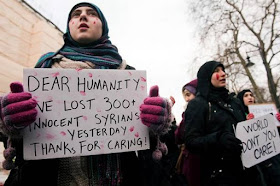5 biggest dams and continue Projects in
Pakistan.
·
Tarbela Dam: 1st biggest dam in the list is Tarbela Dam that's
situated on the Indus River and is also the largest earth filled dam in the
world and is the 2nd largest by the structural volume.
- · Mangla Dam
- · Mirani Dam
- · Warsak Dam
- · Sabakzai Dam
1. Tarbela Dam
1st biggest dam in the
list is Tarbela
Dam that’s situated on the Indus River and is also the
largest earth filled dam in the world and is the 2nd largest by the structural
volume. The dam is 148 meter high above riverbed. Development started in 1968
and completed in 1976 at cost of $1,497 million. Total capacity of the dam is
13.69 cubic kms spread over the construction area of 168,000 km2 .

2. Mangla Dam
Next biggest dam in
Pakistan is Mangla
Dam that’s built in the Jhelum River in the Mirpur District
of Azad Kashmir, Pakistan. It’s also the Ninth largest dam in the world. The
development was started in 1961 and completed in 1967. It was constructed at
the cost of $1.473 billion and also funded by the World Bank and Asian
Development Bank.

3. Mirani Dam
Mirani Dam is yet another major dam in Pakistan. It is a
medium-sized multi-purpose dam that’s situated on the Dasht River in
Balochistan. In terms of volume for flood protection it’s the largest dam in
the world having floodstock of 588,690 cubic hectometer. Its development was
began on July 8, 2002 and completed on October 2006.

4. Warsak Dam
Warsak Dam is a mass
concrete gravity dam and located on the Kabul River north west of the Peshawar
city in Khyber Pakhtunkhwa. It was completed in 2 phases. 1st phase was
completed in 1960 and the 2nd phase was finished in 1980-81. Total capacity of
the Warsak Dam Hydropower Project us 243 MW.

5. Sabakzai
Sabakzai Dam is an
embankment dam at Zohb River in Balochistan. The building of the dam started in
2004 and the irrigation works for the dam are still being built. Based on
ICOLD, Sabakzai Dam is the Seventh largest in the world with a floodstock of
23,638 cubic hectometer.

UNDER
CONSTRUCTING PROJECTS
1.Neelum Jhelum HydroElectric Project (NJHEP)
Location: The Project
envisages the diversion of Neelum waters through tunnels at Nauseri about 41 km
upstream of Muzaffarabad and out falling in Jhelum River Chatter Kalas in
AJ&K, where the powerhouse will be located.
2. Dasu
Hydropower Project
Location: The project is
located at 7 km North of Dasu Town in Kohistan District of the Khyber
Pakhtunkhwa Province and 350 km North from Islamabad being the capital of
Pakistan.The site is 74 km downstream of proposed Diamer Basha Dam Project site.
3. Diamer
Basha Dam
Location: The project
is located on Indus River, about 315 km upstream of Tarbela Dam, 165 km
downstream of the Gilgit Baltistan’s capital Gilgit and 40 km downstream of
Chilas and end of Khyber Pakhtunkhwa boundary
Basha Kohistan.
4. Golen
Gol Hydropower Project in District chitral
5. Keyal Khwar Hydropower Project
Location: The Project is located on Keyal Khwar, a right bank
tributary of Indus River in Lower Kohistan District in Khyber Pakhtunkhwa and
310 Km from Islamabad.










